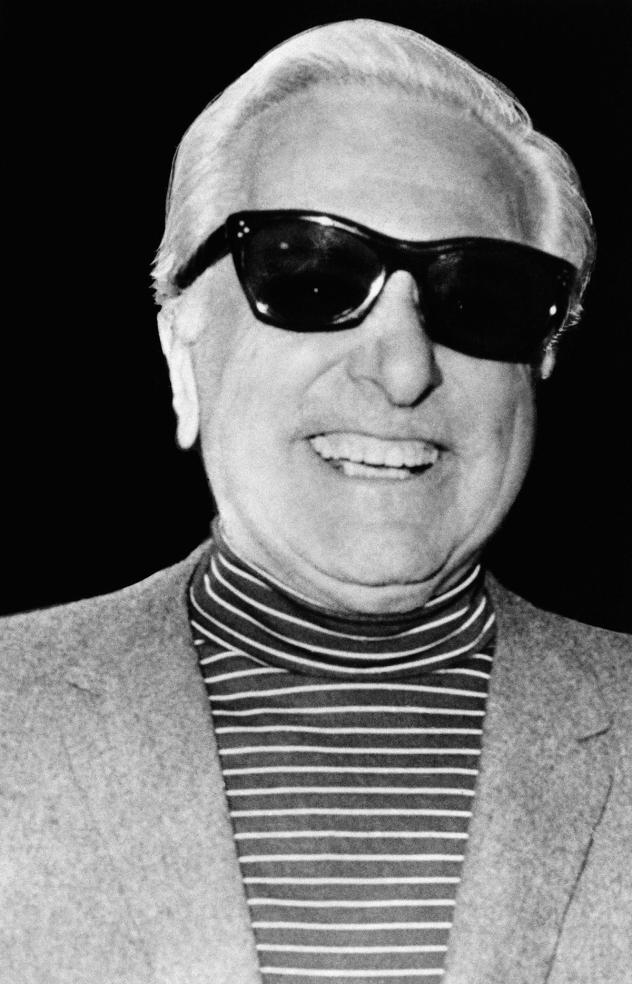
Meet geriatric crime nuisance Charlie “the hat” Strango, of the De Cavalcante crime family. Charlie isn’t exactly Al Capone. He is a low echelon crime captain fresh out of jail. The hapless demi-don is out on paper—probation—so his capacity for earning is limited but he is a little man with big ambitions that include drugs, prostitution, and murder.
Trouble is, the De Cavalcante is crew is comprised of a doltish gang of lumbering misfits and out right losers, who are living on the gangs past glories. Enter Giovanni Rocco AKA Gatto. Giovanni is a Jersey born tough guy through and through. He is also an undercover cop, working on a LCN [La Cosa Nostra] task force for the FBI.
The De Cavalcante crew are impressed right away, not only does Giovanni walk it like he talks it, he also has access to a limitless stash of phony designer tat and cut-price contraband courtesy of his Federal connections. Greed, stupidity and a limitless need for easy cash proves an irresistible draw for the not-so-wise-guys, and pretty soon Giovanni is the man to know in the incestuous world of smalltime crime shenanigans.
It’s all going to end badly we can tell from the outset. Tough guy Giovanni is no Donny Brasco. He quickly gets misty-eyed, a “there but for the grace of god” affinity with the mob guys quickly setting in. Giovanni is loaned a fancy wise-guy pinky ring by the Feds, a ring he takes off after work every night when he returns home to his family. But the heavy load of undercover work is all consuming, and as our crime fighting hero draws ever closer to Charlie Strango and his crime family, Giovanni draws further away from his own.
Canuck crime author Douglas Schofield is no stranger to re-invention,. He has penned a number of books including: Killing Pace, Storm Rising, Time of Departure. Schofield, a retired lawyer and sometime screenwriter, knows a thing or three about crime. He has done a sterling job stirring together this fetid pot of conspiracy. Cooking up a book like this is no easy task, sometimes the recipe leaves us wanting more, elsewhere it is dangerously over-egged. Where the story really excels, however, is in the more crime-writerly style that Schofield employs to whisk this sorry saga together.
Giovanni’s Ring is a somewhat chortlesome title for fans of the double-entendre, it has to be pointed out, but it is the bold print claim that Giovanni Rocco’s tale represents the inside story real life Sopranos that demands further examination, particularly when a hundred pages in, a footnote in 7pt type disavows the claim on the cover.
The truth is that Jersey native David Chase, creator of the Sopranos used both his family and an amalgam of real-world crime figures as a framework to build a fictional world. Chase drew heavily from his personal life and his experiences growing up in New Jersey. Chase has stated that he tried to apply his own “family dynamic to mobsters”. For instance, the tumultuous relationship between series protagonist Tony Soprano and his mother Livia is partially based on Chase’s relationship with his own mother. He was also in psychotherapy at the time and modeled the character of Jennifer Melfi after his own psychiatrist.
Aside from the Jersey setting, Chase used a number of real-life gangsters as models for his characters, including Vincent Palermo, John ‘the eagle’ Riggi and Simone Rizzo from the De Cavalcante crew. He also utilized the lives and exploits of Genovese crimelords Ruggerio “Richie the boot” Boiardo and his son Anthony ‘Tony boy’ Boiardo, who like fictional Tony Soprano were big in the “waste management” business.
Crime never pays, of course. A lesson mafia big-wigs never seem to learn, but the teachable moment from Giovanni’s ring is that being an undercover cop, bringing bad men to justice, can also be a thankless and deadly task.
Soprano’s prequel film “The Many Saints of Newark” staring Ray Liotta, Michael Gandolfini [son of James Gandolfini] is out October first. Set in the 1960s and 1970s in Newark, New Jersey, the film uses the 1967 riots in the city as a backdrop for tensions between the Italian-American and African-American communities, the film follows the teenage years of Tony Soprano in the midst of a violent gang war his uncle and family are involved in.
Giovanni’s Ring [My life inside the real Soprano’s ] by Giovanni Rocco and Douglas Schofield is available now from Chicago Review Press.












